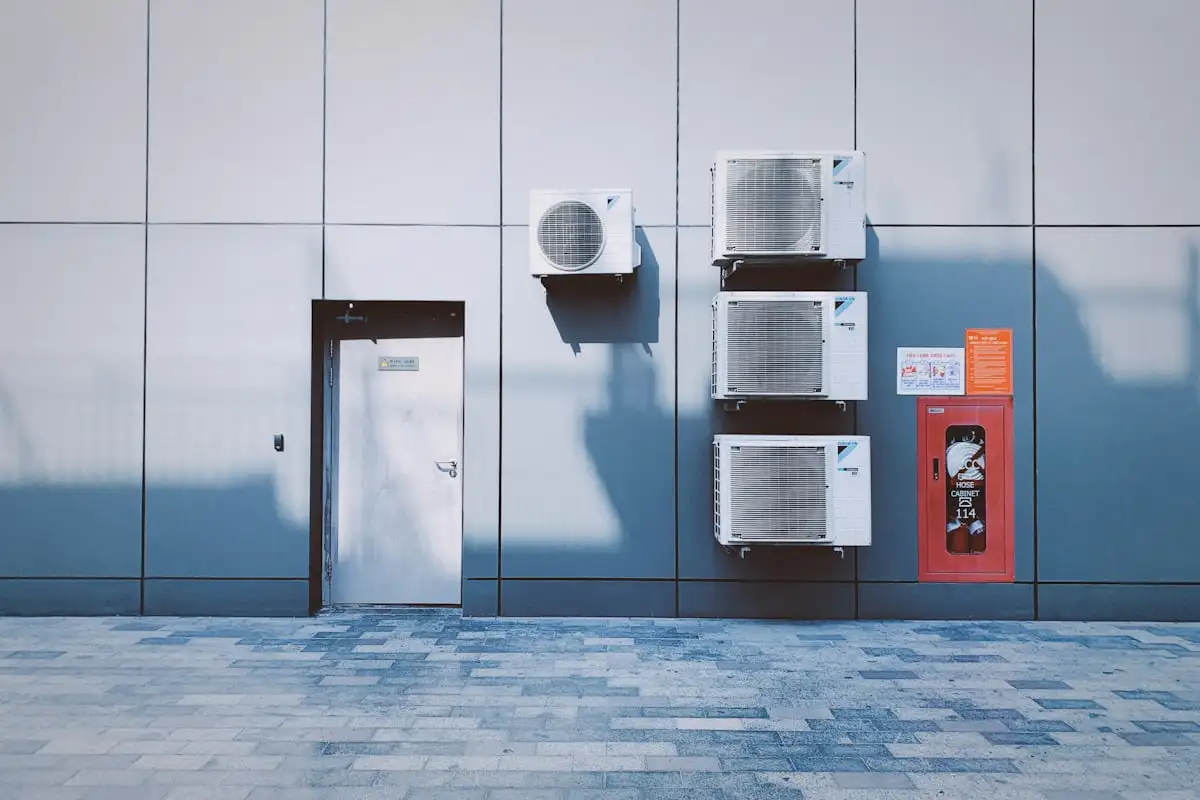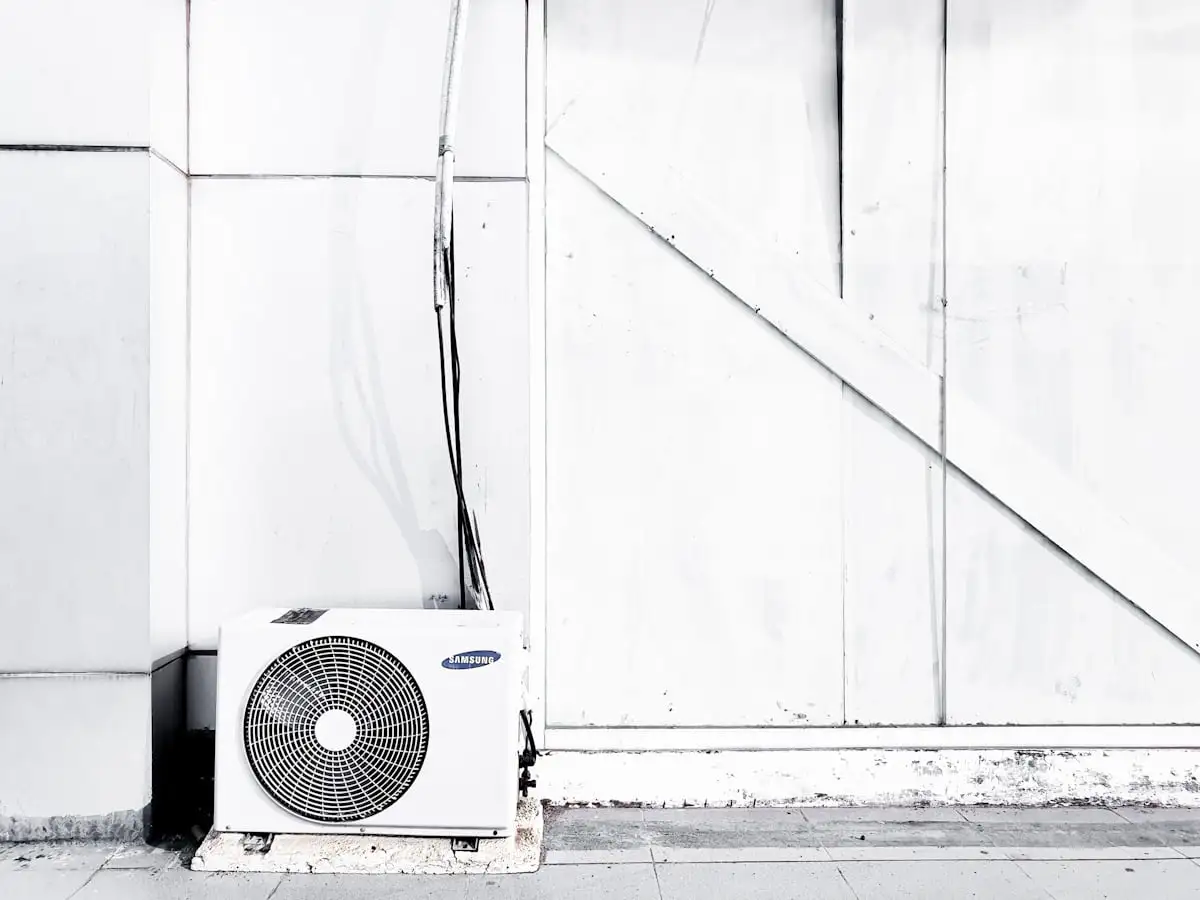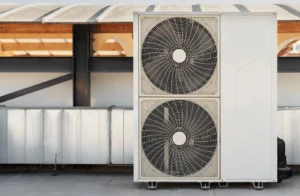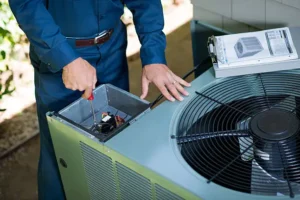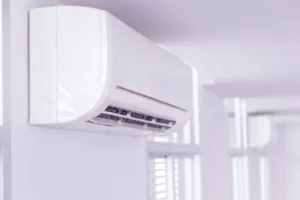An in-depth guide to troubleshooting and repairing common AC compressor faults.
When your central air isn’t cooling like it used to, the problem might be more serious than a dirty filter or a thermostat hiccup. It could be the AC compressor. As the core component of the refrigeration cycle, the compressor is responsible for circulating refrigerant and maintaining the pressure needed to cool your home. Without it, your AC simply can’t function. In this guide, we’ll break down how to spot AC compressor problems, when repairs make sense, and when it’s time to call in a professional.
Common Signs of Compressor Problems
The AC compressor usually shows signs of distress before it completely fails.
- Warm air from vents – If your central air not cooling is an issue, even though the thermostat is set correctly and the fan is running, it could indicate that the compressor isn’t compressing refrigerant properly. Without sufficient pressure, the refrigerant can’t absorb heat, meaning warm or room-temperature air comes out of your vents. This is often the first and most noticeable red flag.
- Odd noises – A healthy compressor runs fairly quietly. If you begin to hear clicking, rattling, or humming, it may point to loose components, a failing motor, or worn internal bearings. A persistent humming noise, for instance, might suggest the compressor is trying to start but failing due to a faulty capacitor. These sounds should never be ignored as they typically indicate developing mechanical failure.
- Hard starting – When the system tries to kick on but struggles or requires multiple attempts to start, it’s called hard starting. This can happen when a compressor draws more power than usual or when start components (like capacitors or relays) are wearing out. Left unaddressed, this added strain could lead to a complete breakdown.
- Frequent breaker trips – If your AC trips the circuit breaker often, it may be pulling excessive electrical current – common with compressors that are overworked, overheating, or beginning to seize up. While it’s tempting to reset the breaker and move on, recurring trips are a sign of deeper electrical issues and shouldn’t be ignored.
- Frost or ice buildup – Ice on refrigerant lines or the outside of the condenser unit may seem harmless, but it usually points to poor refrigerant circulation or airflow issues, both of which can affect compressor performance. Frost can also result from low refrigerant levels, often caused by leaks that force the compressor to work harder, accelerating wear.
Causes of Compressor Failure
Compressor failure is rarely sudden as it’s usually the result of multiple small issues compounding over time. Understanding these common causes helps in both prevention and early intervention.
- Electrical Issues: The compressor depends on parts such as capacitors, relays, and contactors to operate correctly. Over time, these parts can corrode or wear out, causing voltage spikes or short circuits. A faulty start capacitor, for instance, may fail to provide the initial jolt needed to power the motor, leading to startup failures and repeated breaker trips.
- Refrigerant imbalance – Whether there’s too much or too little refrigerant in the system, both conditions place undue stress on the compressor and can lead to premature failure. Low refrigerant means the compressor must work longer and harder to reach target temperatures, while overcharging can increase internal pressure, raising the risk of damage. Leaks, poor installation, or incorrect servicing often contribute to these imbalances.
- Overheating – A dirty condenser coil, blocked air intake, or even something as simple as a clogged air filter can lead to heat buildup. If heat isn’t being dissipated properly, the compressor may overheat, breaking down the insulation inside the motor windings. Excess heat can also damage other components, reducing overall system efficiency and shortening the unit’s lifespan.
- Wear and age – If your unit is more than 10 to 15 years old and hasn’t had regular tune-ups, internal wear can reduce pressure generation and increase electrical resistance. Bearings may wear out, valves may fail to seal properly, and refrigerant loss can become more frequent.
- Improper installation – One of the most overlooked factors is poor system design. If the system is too large or too small for the space, the compressor may short cycle, repeatedly turning on and off, which accelerates failure. Improper refrigerant line sizing or inadequate drainage setup can significantly hinder system performance and efficiency, potentially damaging the compressor over time.
Diagnosing the Problem
Although some signs are visible or audible, accurately diagnosing compressor trouble involves tools and tests most homeowners don’t have. That said, here’s what you can check before calling in the pros.
- Listen for unusual sounds during startup – Pay attention to how the unit sounds when it turns on. Does it click, hum loudly, or make a rattling noise? These sounds might signal mechanical or electrical problems inside the compressor.
- Check for warm air and inspect your thermostat – Ensure your thermostat is set correctly, and the batteries (if applicable) are working. If the thermostat isn’t the problem and warm air persists, the culprit could be somewhere in the system – likely the compressor.
- Look at your outdoor unit for ice or debris buildup – Ice forming on refrigerant lines or coils, as well as accumulated leaves and grime, could point to refrigerant or airflow issues, both of which burden the compressor.
While these steps can help you narrow down the issue, electrical testing, refrigerant diagnostics, and motor inspection require a certified technician. Start by searching for “AC near me” or AC compressor repair services.
AC Compressor Repair vs. Replacement
Not every compressor issue means it’s time to replace the entire unit. In many situations, especially when caught early, a targeted repair can restore performance and avoid the cost of a full system overhaul.
- Repair – If your system is relatively new and the issue is minor, such as a bad capacitor, relay issue, or weak start component, a repair is typically the most cost-effective option. When the rest of your unit is functioning well and the compressor hasn’t experienced internal failure, restoring performance is often straightforward.
- Replace – However, if the compressor motor is burned out, the unit is past its prime, or you’ve experienced multiple major issues in a short time, a full compressor replacement or even system upgrade may be the better long-term investment. Aging systems often lose efficiency and break down more frequently, so replacing them can be a smart move.
Even if you’re comfortable with DIY maintenance, the AC compressor is not a component to troubleshoot on your own. The process deals with intricate electrical components, high-pressure refrigerant, and requires accurate calibration. Attempting a DIY fix could result in injury or more costly damage.
Conclusion
Your AC compressor plays a vital role in keeping your home cool and comfortable. Recognizing early warning signs and seeking prompt AC compressor repair can save you money, prevent full system failure, and extend the life of your HVAC system.
If your central air is not cooling, don’t wait until it fails entirely. Visit On Point Service Company and get your AC compressor checked out today.

